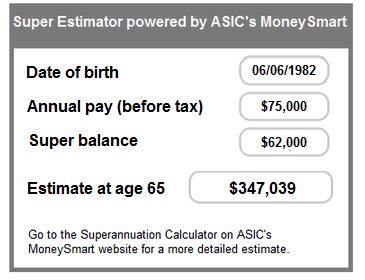ASIC has today released the results of the consumer testing of the Choice Product Dashboard undertaken last year by researchers Latitude Insights as Report 455 Consumer testing of the Choice product dashboard (REP 455).
The testing was conducted ahead of the introduction of the requirements for all registrable superannuation entity (RSE) licensees to include Choice dashboards on websites from 1 July 2016. It follows on from the consumer testing that ASIC commissioned in relation to the product dashboard for MySuper products, which was released in 2013 as Report 378 Consumer testing of the MySuper product dashboard (REP 378).
The testing took into account feedback from the first round of testing for the MySuper product dashboard and involved a significantly larger sample size: 55 people in 2013 to 120 people in 2014.
The report found that overall there was a more positive sentiment towards superannuation than in prior testing of the MySuper dashboard in 2013. Some participants considered superannuation to be a topic that could be simplified and better communicated and while dashboards are not for everyone, for those seeking to understand and compare funds, they provide a resource that was considered to be highly valuable.
The research indicated people may disengage when superannuation information is complex. They may also ignore complex information and generally prefer to focus on simpler elements.
ASIC Commissioner Greg Tanzer said, 'To be effective, it is important that the dashboard is useful to as wide an audience as possible. This testing should be helpful to superannuation trustees in engaging with consumers with varying levels of knowledge and interest in superannuation.
The response to the dashboard, while positive overall, depended on many factors, including each participant's self-reported level of financial awareness. The testing highlighted how sensitive people were to small changes in the design and terminology, which highlighted the need for consistency of information and presentation from superannuation funds.
One of the key findings was about the use of a ‘super estimator' (there is a link at the end of the product dashboard to ASIC's MoneySmart website and a basic version of a calculator that uses some of the data from the dashboard). In particular, the super estimator appealed to participants who claimed to pay less attention to financial matters. The concept of the estimator has been reflected in draft regulations released for consultation by government yesterday.
More information about the super estimator is provided as an attachment to this media release. Any feedback in relation to the super estimator can be provided to ASIC at StrongerSuperReforms@asic.gov.au.
Further detail about the elements of the dashboard is available on the Australian Prudential Regulation Authority's website.
ASIC intends to provide further guidance in relation to the product dashboard requirements, as it did in 2013 with MySuper dashboards. In particular, we will focus on the new requirements, such as the asset allocation pie chart, that is included in the Choice dashboard.
ASIC also intends to provide guidance on the portfolio holdings disclosure regime which is being consulted upon as part of the transparency package.
Attachment to 15-378MR ASIC releases results of consumer testing for the Choice product dashboard and further detail about super estimators
How the super estimator widget works
Superannuation funds will embed the ‘super estimator’ on their product dashboards in a similar way to embedding a YouTube video. The embed link instructions will be provided by ASIC.
Trustees must insert the x.xx% figure for both the 'statement of fees and other costs' and 'return target' in the embed link.
There will also be instructions for trustees to follow in the form of a legislative instrument. Further guidance may accompany this instrument and the instructions it contains.
ASIC will be responsible for maintaining and updating the super estimator, and superannuation funds will be responsible for maintaining the x.xx% figures.
Examples of the super estimator, including what it might look like populated with data, are included below.

These are the default settings:

This is what the estimator would look like if someone populated it with their own data:
